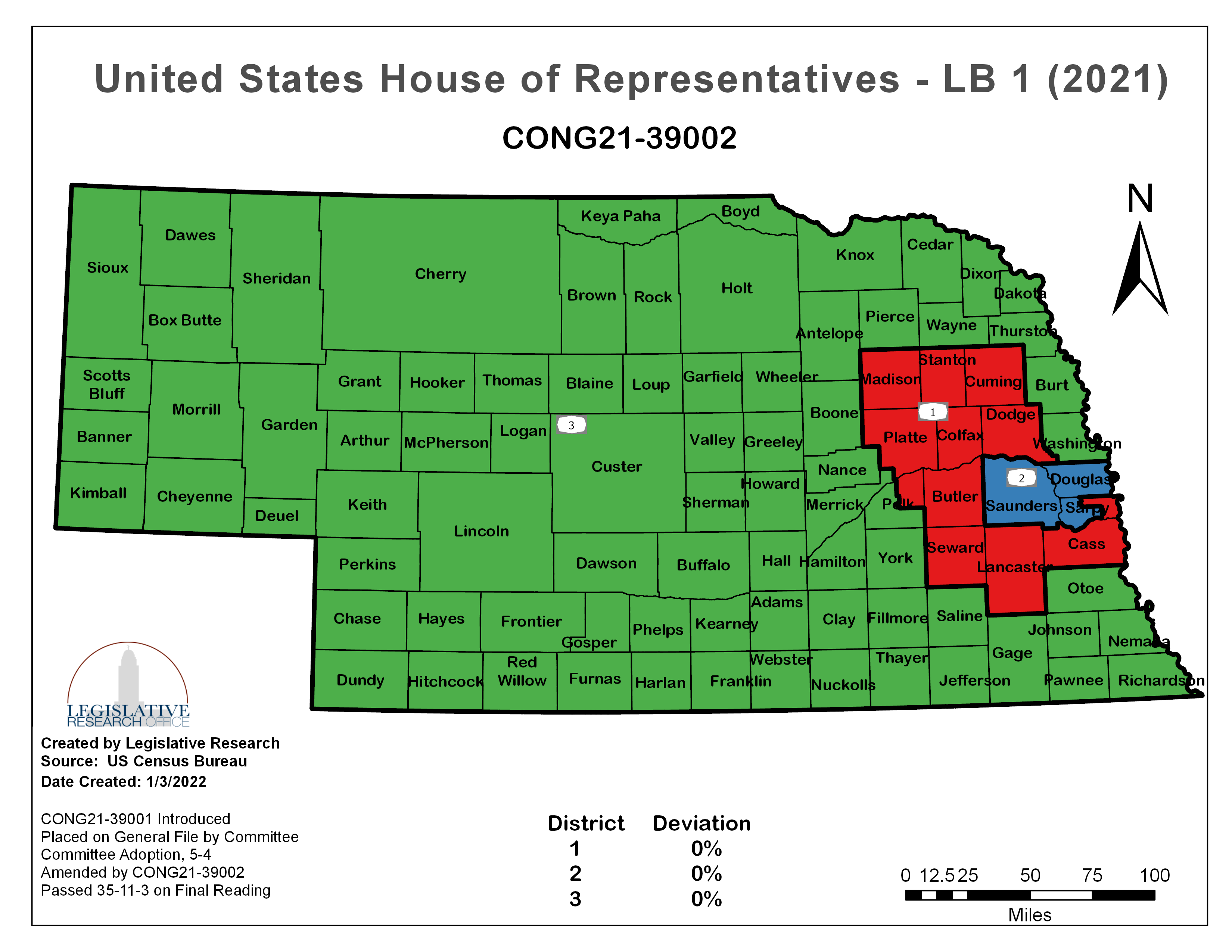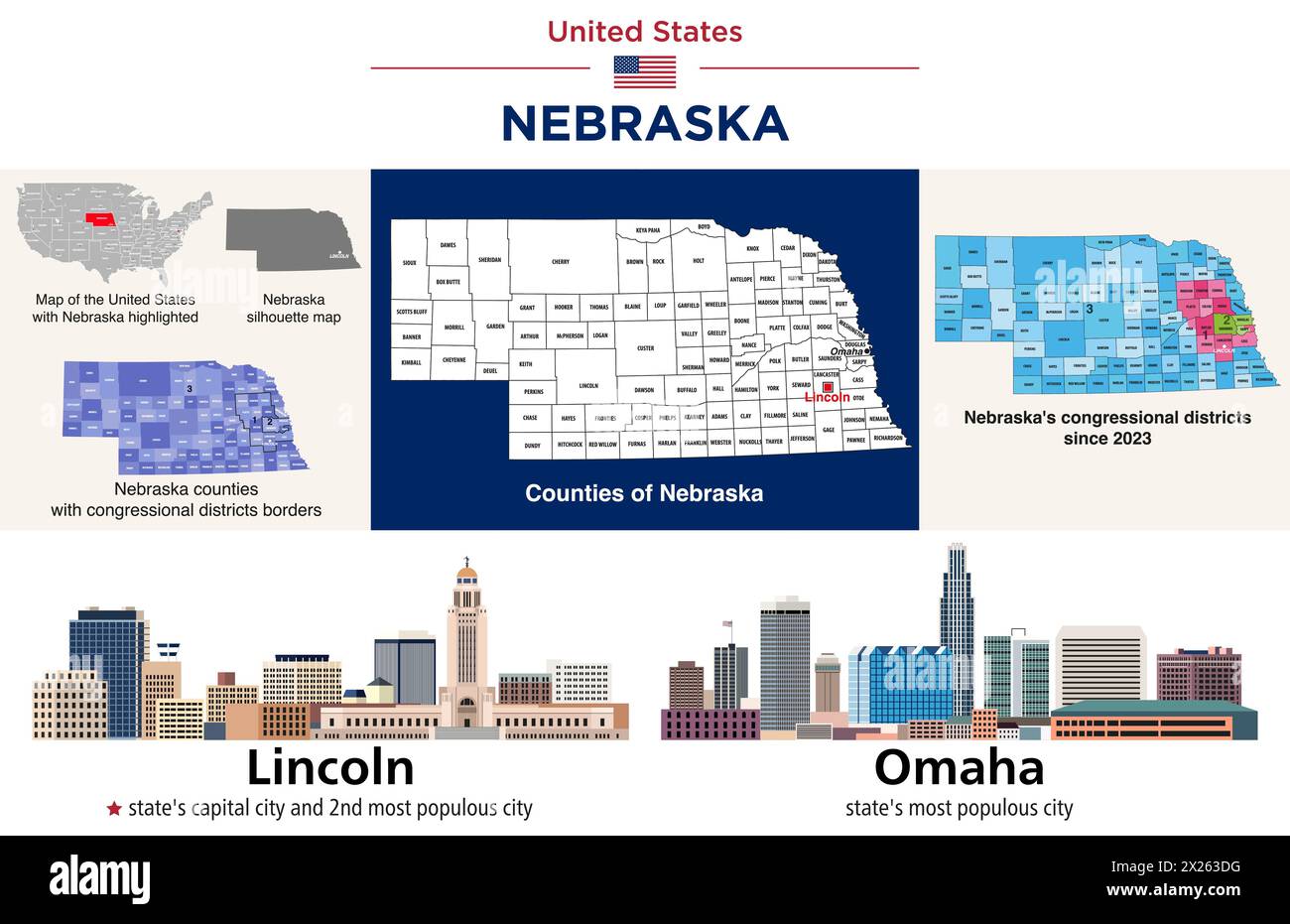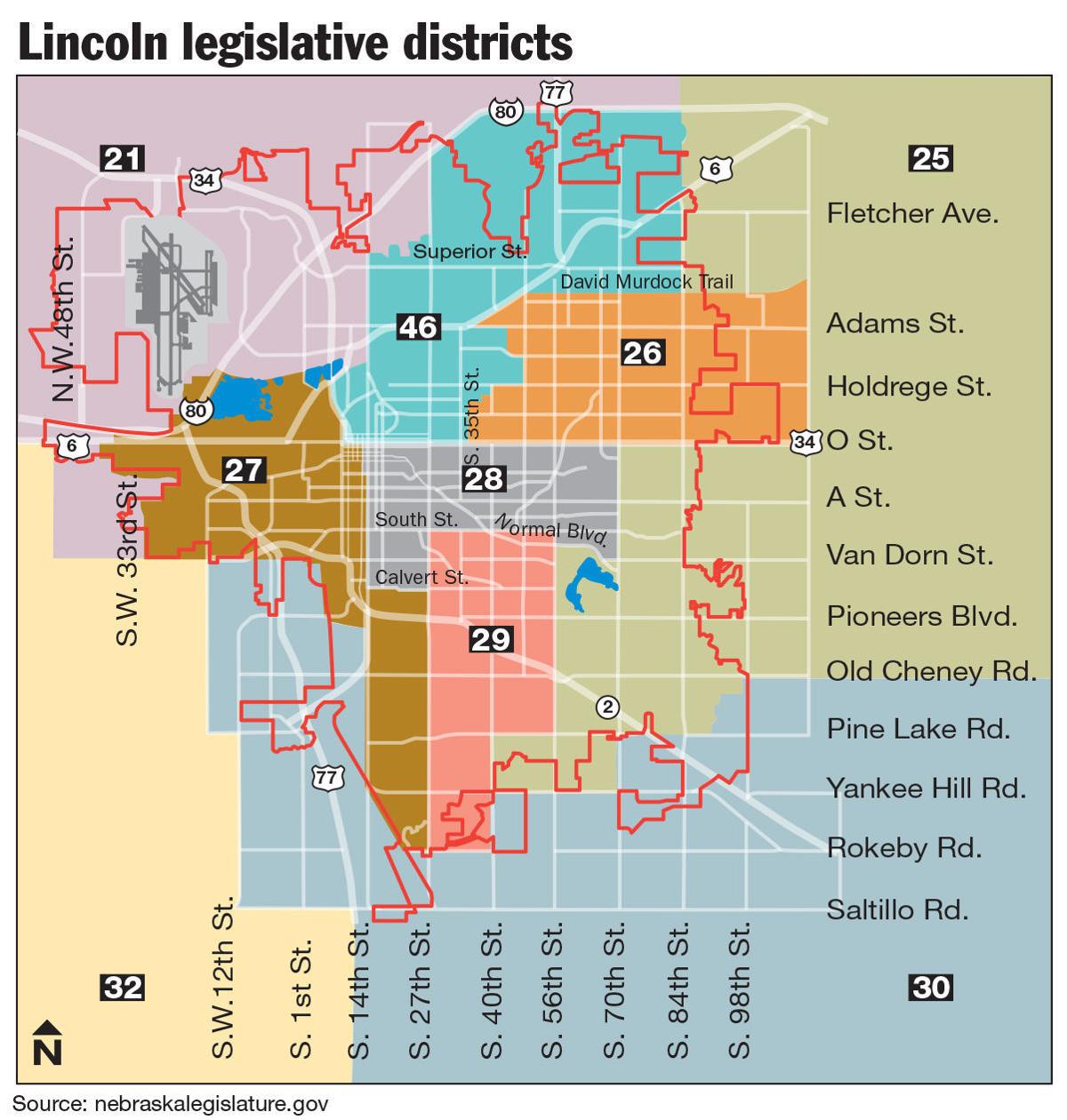Have you ever wondered about your local representation in the big picture of the United States government? It's a pretty common question, too. Knowing which congressional district you live in, especially if you're in a city like Lincoln, Nebraska, is actually quite important. This information helps you figure out who speaks for your community in the House of Representatives, and that, is that, truly matters for local voices to be heard in Washington.
Understanding your district helps you connect with the people who shape national policies that touch your everyday life. For folks in Lincoln, Nebraska, getting a clear answer to this question links them directly to the legislative process. It's about knowing where your vote counts and who you can reach out to with concerns or ideas.
This article will clear up which district covers Lincoln and provide some helpful context about Nebraska's representation in Congress. We'll also touch on why this information is useful for anyone living in or around the area, so, you can stay informed about your place in the nation's lawmaking body.
Table of Contents
- Lincoln, Nebraska's Congressional Home
- Meet Your Representative for Nebraska's 1st District
- Nebraska's Presence in the U.S. Congress
- How Districts Are Shaped: The 2020 Census Impact
- Connecting with Your Representatives
- Your Voice in the Legislative Process
- Common Questions About Nebraska's Congressional Districts
Lincoln, Nebraska's Congressional Home
For anyone living in Lincoln, Nebraska, or perhaps just curious about its political layout, the city is part of a very specific area when it comes to federal representation. Lincoln, you see, is located within Nebraska's 1st congressional district. This district takes up a good portion of eastern Nebraska, nearly all of it, actually, outside of the parts that fall into the 2nd congressional district.
This means that when it comes to having a voice in the United States House of Representatives, Lincoln residents share a representative with many other communities in this eastern part of the state. It's a pretty important detail for understanding local politics and how they connect to the national stage. Knowing this, in a way, helps you understand where your community fits into the larger picture of governance.
The boundaries of these districts are drawn with care, and for Lincoln, the 1st district is its designated area for federal representation. This information is pretty straightforward, yet, it's a key piece of civic knowledge for everyone in the area.
Meet Your Representative for Nebraska's 1st District
The person who currently speaks for Nebraska's 1st congressional district, which includes Lincoln, is Mike Flood. He's a Republican, and he took on this important role on July 12, 2022. Mr. Flood has, you know, been the representative for this area since that time, serving the people of Lincoln and the surrounding communities.
He was reelected to his U.S. House seat, showing that the people of Nebraska's 1st congressional district, including those in Lincoln, put their trust in him to continue his work. His role involves bringing the concerns and needs of his constituents to the House of Representatives in Washington. It's a rather significant job, representing a diverse group of people.
Knowing your representative by name is a good step towards engaging with the political process. Mike Flood, as the representative for this district, is the direct link between Lincoln and the federal legislative body. You can often find information about his activities and how he's working for the district through various channels, too.
Nebraska's Presence in the U.S. Congress
Nebraska, as a state, has a defined number of voices in the United States Congress. The state has two senators who serve in the United States Senate, and it also has three representatives in the United States House of Representatives. This means Nebraska has a total of five voting members across both chambers of Congress, which, you know, gives it a certain level of representation.
While Lincoln is in the 1st district, it's good to know a little about the other districts in Nebraska, just to get the full picture. The 2nd district, for example, includes the core of the Omaha metropolitan area, which is in the eastern part of the state. Then there's the 3rd district, which covers the western and central parts of Nebraska, encompassing a much larger geographic area, in some respects.
These three districts divide the state's population for representation in the House. Each representative works to bring the concerns of their specific district to the national discussion. This structure ensures that different parts of the state, with their own unique needs and interests, have a voice in federal lawmaking. It's pretty neat how that works out.
How Districts Are Shaped: The 2020 Census Impact
The way these congressional districts are drawn isn't set in stone forever; they change periodically. A big factor in this change is the United States Census, which happens every ten years. After the 2020 census, for instance, there was a process of redistricting. This means the lines for where each representative's district begins and ends were redrawn, more or less, to reflect population shifts.
Because of this redistricting that happened after the 2020 census, voter registration statistics for congressional districts and legislative districts were not immediately available for a certain time frame. This is a normal part of the process, as the new lines need to be established and data updated. It's a pretty significant undertaking, ensuring fair representation based on where people live.
So, the current boundaries of Nebraska's 1st congressional district, where Lincoln sits, are a result of these post-2020 census adjustments. This process is how the number of representatives each state gets, and the shape of their districts, is kept up-to-date with population changes. It's a vital part of our democratic system, actually, making sure representation stays current.
Connecting with Your Representatives
Knowing which district Lincoln is in and who represents it is just the first step. The next, and arguably more important, step is to connect with your representative. Your member's website and contact information are usually pretty easy to find. This allows you to share your ideas, voice your concerns, or just keep up with what they're doing on your behalf.
The provided information states that "in Nebraska, the citizens represent the second house of the legislature, so it is very important to voice your ideas." While this refers to the state legislature, the sentiment certainly applies to federal representation too. Your input is valuable, and, you know, it helps your representative understand what matters most to the people they serve.
Reaching out to your representative, whether it's Mike Flood for Lincoln or one of Nebraska's senators, is a direct way to participate in the democratic process. It's how your thoughts and opinions can make their way to Washington, potentially influencing the laws that affect us all. This kind of engagement is pretty fundamental to how our government works, to be honest.
Your Voice in the Legislative Process
Understanding your congressional district and who represents you is a key part of civic participation. Congress, as the legislature of the United States of America, was established under the Constitution of 1789. It's structurally separate from the executive branch, and it has a big job: making laws. Knowing your representative helps you engage with this lawmaking process, which is pretty cool.
The official website for U.S. Congress, congress.gov, presented by the Library of Congress, is a great resource. You can discover how Congress makes laws there, browse legislation, and even check out the Congressional Record for proceedings and debates. It's a pretty comprehensive site for anyone wanting to learn more about the legislative activity of representatives and senators.
Your visit to the historic U.S. Capitol, where much of this work happens, begins as you enter the Capitol. There's info you need before coming to the people's house, like scheduling a school tour, and more. All of this points to the idea that Congress is accessible, and knowing your district is your starting point for connecting with it. It's like, a very direct line to how our country runs.
Common Questions About Nebraska's Congressional Districts
People often have questions about congressional districts, especially when it comes to specific places like Lincoln. Here are a few common ones, with answers based on what we've discussed, you know, to clear things up even more.
Who is the current representative for Lincoln, Nebraska?
The current representative for Lincoln, Nebraska, is Mike Flood. He represents Nebraska's 1st congressional district. He's a Republican and has been serving since July 12, 2022. So, if you live in Lincoln, he's the person to look for when thinking about your federal representation, literally.
How many congressional districts does Nebraska have?
Nebraska has three congressional districts. These districts divide the state for representation in the U.S. House of Representatives. Each district sends one representative to Congress. This is pretty standard for states of Nebraska's size, actually, to have multiple districts.
What areas do Nebraska's other congressional districts cover?
Beyond the 1st district which includes Lincoln, Nebraska has two other congressional districts. The 2nd district covers the core of the Omaha metropolitan area, located in eastern Nebraska. The 3rd district, meanwhile, encompasses the western and central parts of the state. So, you can see, the state is more or less divided geographically for its representation.
As of August 2025, a total of 96 individuals have represented Nebraska in the U.S. House, which shows a pretty rich history of representation for the state. This historical perspective, in a way, just adds to the story of how Nebraska has been part of the national conversation.
Understanding which congressional district Lincoln, Nebraska, falls into is a simple yet powerful piece of information. It connects you directly to your representative, Mike Flood, and to the larger workings of the U.S. Congress. Knowing this helps you engage with the legislative process, making your voice heard on issues that matter to you and your community. You can learn more about your government on our site, and link to this page for more details about your local representatives.



Detail Author:
- Name : Horacio Larson I
- Username : christa.smitham
- Email : elbert.jones@yahoo.com
- Birthdate : 1979-01-11
- Address : 1997 Klein Lake Rosalynfort, MO 67327-7668
- Phone : 714-577-2845
- Company : Prosacco PLC
- Job : Orthotist OR Prosthetist
- Bio : Magni mollitia aspernatur ex. Sint consequuntur voluptatem culpa id totam quod. Aperiam nostrum dignissimos suscipit omnis.
Socials
tiktok:
- url : https://tiktok.com/@bayer1987
- username : bayer1987
- bio : Odio natus tempora soluta omnis et debitis.
- followers : 1783
- following : 2162
facebook:
- url : https://facebook.com/bayer1982
- username : bayer1982
- bio : Natus officiis quia nostrum quia dolores distinctio.
- followers : 4810
- following : 49
linkedin:
- url : https://linkedin.com/in/susie_id
- username : susie_id
- bio : In aut provident distinctio.
- followers : 4296
- following : 1022
instagram:
- url : https://instagram.com/susie_real
- username : susie_real
- bio : Deleniti aliquid est dolorum illum non. Repellat nam id maxime nesciunt earum quo.
- followers : 5062
- following : 896